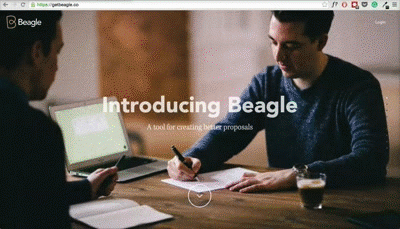Not so long ago the single page website was looked upon as something to be sneered at; an object of derision. This is no longer the case. Now, UX designers are looking at the potential of how a single page website can offer an improved user experience. Of course, the single page website isn’t for everyone, but if your content lends itself to being streamlined in a creative way, it could just be for you.
Amongst the UX design community, there is certainly some belief that the potential navigation ease and improved fluidity that a one-page site can offer is a major positive for users. In this article, we take you through how UX design works within single-page websites. But first, what does a UX designer actually do?
What does a UX designer do?
UX design is all about the experience of the user and the consideration of all factors that create an end product that is the best it can be for the user. A UX designer considers areas such as: •
- Visual design
- Structure and organisation of information
- Findability
- Usability and interaction
- Accessibility
UX designers are concerned with providing the user with content which can be accessed on any device, is easy to navigate and is visually pleasing. A website that is created by a great UX designer should be both productive and enjoyable to use. UX designers have systems and procedures they use in creating the most effective designs possible. These include:
- The creation of wireframes. These are mock-ups that show how the design will work, before any coding takes place.
- The creation of personas. Used widely across a range of fields, personas are useful in gaining a more accurate idea of what the end user will look like and what their experience should be.
- The creation of scenarios. Following on from the creation of personas, it then becomes possible to create scenarios in order to provide a better picture of what the user experience might be.
- The facilitation of user testing. How do you know if a site works for a user? You test it using real users. This is where UX designers can see where any issues are present.
How UX design works with single page websites
Not everyone is going to benefit from using a single page website. For more complex and larger businesses and organisations it often just isn’t an option. But if your content is limited anyway, and a full site would only consist of a few pages, a single page website may just be a very good idea. Some UX designers argue that single page websites provide a better user experience for several reasons:
- Navigation is simple
- Responsive design is generally easier to accomplish
- Structure is simpler making organisation of content easier
- A storytelling format is easier to adopt and is often well received by users
- Single page sites are by nature simplified
Making a single page website work
Although a single page website can lend itself especially well to UX design there are certain points that are important to remember:
Small chunks of content should be used: One of the worst possible things that can happen with a single page website is that a user has to read reams of uninterrupted content. Single page sites should always be structured to include several smaller chunks of content which are easier to digest.
Quick access navigation should be considered: Remember that users of a site will be scrolling to reach information. For this reason, it’s often a good idea to include navigation features such as a sticky navigation bar at the top of the page, and buttons located throughout the page to access the top of the page or another section of content.
Remember to use well-crafted calls to action: If you want to convert users to sales then you need to employ a call to action that is meaningful and well positioned, on at least one occasion.
Be simple but not boring with the design It’s important not to be too busy with the design of a single page website. Too much movement and intricacy can be distracting for the user. This doesn’t mean that features such as some well-chosen animation cannot be employed, to enhance user enjoyment.
Be mindful of load times: No-one is going to want to sit and wait forever while your website loads. Content should always be streamlined so that the site isn’t too heavy. If you feel you have more to say than one streamlined page will allow, then maybe a single page website isn’t for you.

Beagle kinda nailed the whole one-page website thing…
Single page websites, FTW!
You can see why UX designers agree that a well thought out single page website can provide an ideal user experience. They can be smooth, easy to navigate and enjoyable if designed in the right way. Working with a UX designer through ideation and wireframes, personas, scenarios and user testing will also help you get the most out of your single page website. Just make sure you consider your content, navigation, design and simplicity for the best possible experience!

